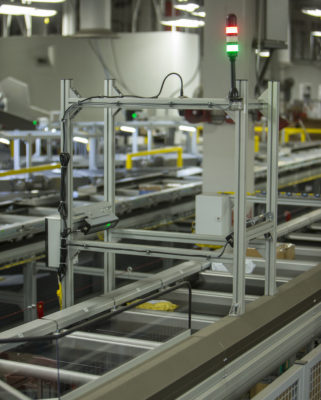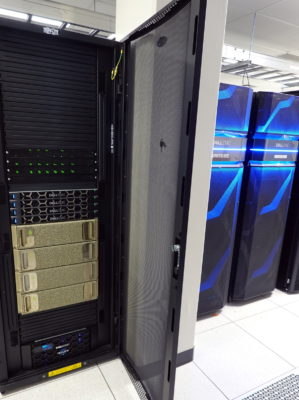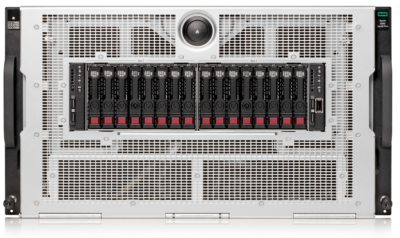In 2019, the U.S. Postal Service had a need to identify and track items in its torrent of more than 100 million pieces of daily mail.
A USPS AI architect had an idea. Ryan Simpson wanted to expand an image analysis system a postal team was developing into something much broader that could tackle this needle-in-a-haystack problem.
With edge AI servers strategically located at its processing centers, he believed USPS could analyze the billions of images each center generated. The resulting insights, expressed in a few key data points, could be shared quickly over the network.
The data scientist, half a dozen architects at NVIDIA and others designed the deep-learning models needed in a three-week sprint that felt like one long hackathon. The work was the genesis of the Edge Computing Infrastructure Program (ECIP, pronounced EE-sip), a distributed edge AI system that’s up and running on the NVIDIA EGX platform at USPS today.
An AI Platform at the Edge
It turns out edge AI is a kind of stage for many great performances. ECIP is already running a second app that acts like automated eyes, tracking items for a variety of business needs.

“It used to take eight or 10 people several days to track down items, now it takes one or two people a couple hours,” said Todd Schimmel, the manager who oversees USPS systems including ECIP, which uses NVIDIA-Certified edge servers from Hewlett-Packard Enterprise.
Another analysis was even more telling. It said a computer vision task that would have required two weeks on a network of servers with 800 CPUs can now get done in 20 minutes on the four NVIDIA V100 Tensor Core GPUs in one of the HPE Apollo 6500 servers.
Today, each edge server processes 20 terabytes of images a day from more than 1,000 mail processing machines. Open source software from NVIDIA, the Triton Inference Server, acts as the digital mailperson, delivering the AI models each of the 195 systems need — when and how they need it.
Next App for the Edge
USPS put out a request for what could be the next app for ECIP, one that uses optical character recognition (OCR) to streamline its imaging workflow.
“In the past, we would have bought new hardware, software — a whole infrastructure for OCR; or if we used a public cloud service, we’d have to get images to the cloud, which takes a lot of bandwidth and has significant costs when you’re talking about approximately a billion images,” said Schimmel.
Today, the new OCR use case will live as a deep learning model in a container on ECIP managed by Kubernetes and served by Triton.
The same systems software smoothed the initial deployment of ECIP in the early weeks of the pandemic. Operators rolled out containers to get the first systems running as others were being delivered, updating them as the full network of nearly nodes was installed.

“The deployment was very streamlined,” Schimmel said. “We awarded the contract in September 2019, started deploying systems in February 2020 and finished most of the hardware by August — the USPS was very happy with that,” he added.
Triton Expedites Model Deliveries
Part of the software magic dust under ECIP’s hood, Triton automates the delivery of different AI models to different systems that may have different versions of GPUs and CPUs supporting different deep-learning frameworks. That saves a lot of time for edge AI systems like the ECIP network of almost 200 distributed servers.
The app that checks for mail items alone requires coordinating the work of more than a half dozen deep-learning models, each checking for specific features. And operators expect to enhance the app with more models enabling more features in the future.
“The models we have deployed so far help manage the mail and the Postal Service — it helps us maintain our mission,” Schimmel said.
A Pipeline of Edge AI Apps
So far, departments across USPS from enterprise analytics to finance and marketing have spawned ideas for as many as 30 applications for ECIP. Schimmel hopes to get a few of them up and running this year.
One would automatically check if a package carries the right postage for its size, weight and destination. Another one would automatically decipher a damaged barcode and could be online as soon as this summer.

“This has a benefit for us and our customers, letting us know where a specific parcel is at — it’s not a silver bullet, but it will fill a gap and boost our performance,” he said.
The work is part of a broader effort at USPS to explore its digital footprint and unlock the value of its data in ways that benefit customers.
“We’re at the very beginning of our journey with edge AI. Every day, people in our organization are thinking of new ways to apply machine learning to new facets of robotics, data processing and image handling,” he said.
Learn more about the benefits of edge computing and the NVIDIA EGX platform, as well as how NVIDIA’s edge AI solutions are transforming every industry.
Pictured at top: Postal Service employees perform spot checks to ensure packages are properly handled and sorted. Courtesy of U.S. Postal Service.
